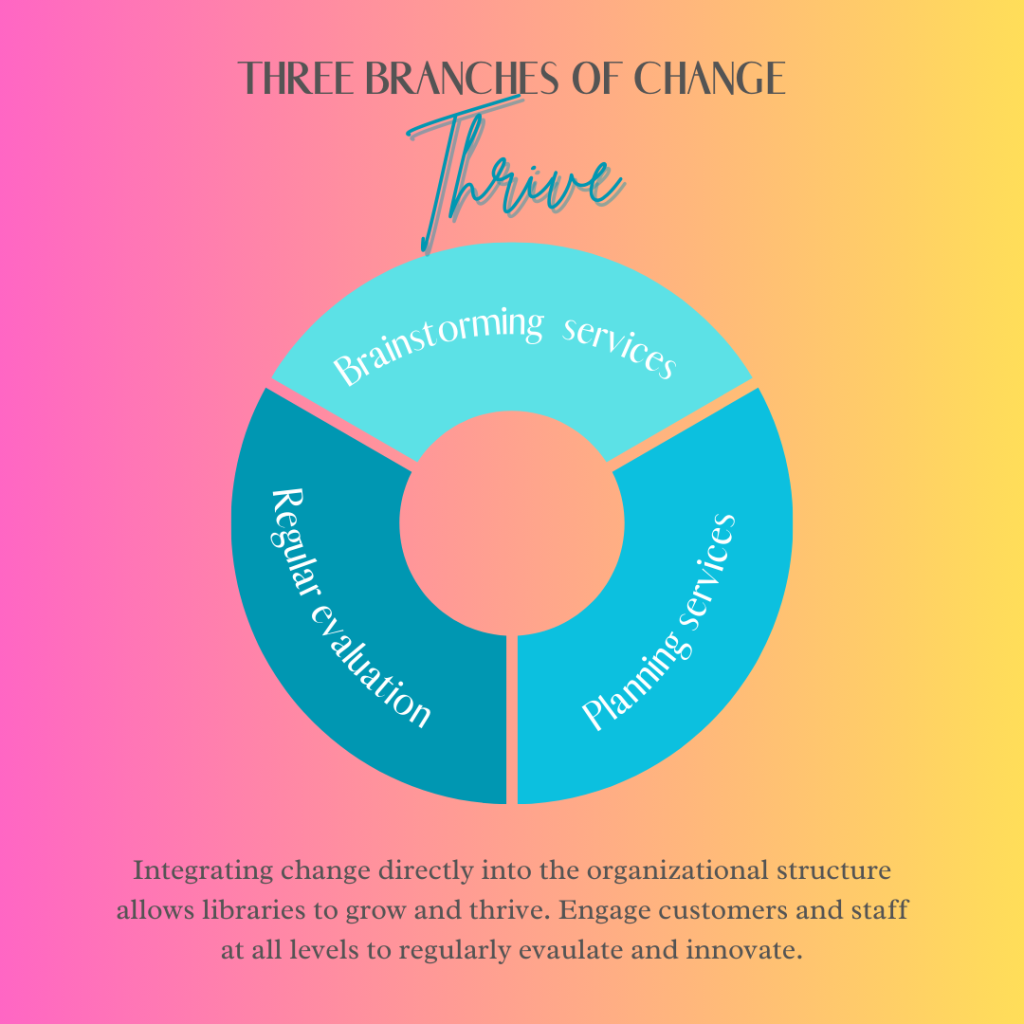Change comes for every organization, whether the leadership of that organization is ready for it or not. Change is a naturally occurring component of all forms of life and from an organizational perspective, what socially constructed habitat could be a more vibrant manifestation of human life than a library, a microcosm of any community filled with people seeking knowledge, entertainment, enlightenment, understanding, engagement, comfort, and simply even shelter?

As with many other institutions, however, library leadership and staff can be resistant to change. Noted psychologist Kurt Lewin, generally considered to be the father of social psychology, wrote extensively of this phenomenon of resistance, summarized by Jost as a process in which “social norms, standards, and institutions become like ‘vested interests,’ insofar as we become highly protective of them. The individual, in other words, is embedded in social groups, and social groups are embedded in the social system” (2015).
In Library 2.0, Casey and Savastinuk put a lens on this within library organizational structure noting that “libraries tend to be strong and solid structures that, although designed to withstand the difficulties of modern government institutions, are not necessarily well situated to quickly and efficiently change to meet new market demands.” (2019). At the same time, the authors describe the imperative for change within library systems identifying three essential necessities for the health and longevity of a system, engaging “new users,” developing “new services,” and “[r]esponding rapidly to changing customer demands.”
Casey and Savastinuk describe a reality for many libraries in which they respond to the inevitability of change by embedding a cyclical response system into their structure. The authors note this “sporadic” or “intermittent” process for change can be both onerous and demoralizing for staff, as processes are expected to be removed and replaced wholesale time and again with each new leadership directive.

Instead the authors suggest embedding responsive change directly into everyday operations in a nimble, iterative, and incremental manner that keeps process, systems, and programming constantly evolving along myriad pathways in reaction to changing user, community, and staffing needs. The benefit of this is an ever-adaptive atmosphere centered around the holistic needs of the library organism, as opposed to the culture shock of removing a stable large scale process and implementing something entirely different with little regard to the adjustment needs of staff and users. Whether the process was truly stable or not is irrelevant, what matters in this scenario is the perception of stability within the library culture.
Casey and Savastinuk describe a “three-step cycle” for implementing change:
- Brainstorming for new and modified services
- Planning for services and success
- Evaluating those services on a regular basis.
To manage this process the authors identify a structure of three branches to manage these steps, an “Investigative Team,” a “Planning Team,” and a “Review Team.”

Wandi wrote of change management within the Copenhagen library system and devised recommendations for a proactive approach. Similar to Casey and Savastinuk, she particularly points out the importance of staff engagement, stating, “…we learned to connect the implementation of changes closer to staff members’ work” finding “it was easier to explain why plans and changes were being made” and “helped us avoid the communication gap that so easily divides managers and staff.” (2019).
No library can avoid change but, more importantly, no library should want to. Libraries are part of the heart of the communities in which they are centered and a library that ceases to adapt in synergy with the community evolving around it, ceases to serve its most basic elemental purpose. Libraries, therefore, should not fear or oppose change, but instead should embrace it. It is a library’s willingness to adapt to the needs of its community that will keep it relevant, vibrant, and essential in a world where fear of change stymies community building. In this way, libraries become not only a shelter or a haven, but a beacon.
References
Casey, M. E., & Savastinuk, L. C. (2007). Library 2.0: A guide to participatory library service. Medford, N.J: Information Today. pp. 37-56.